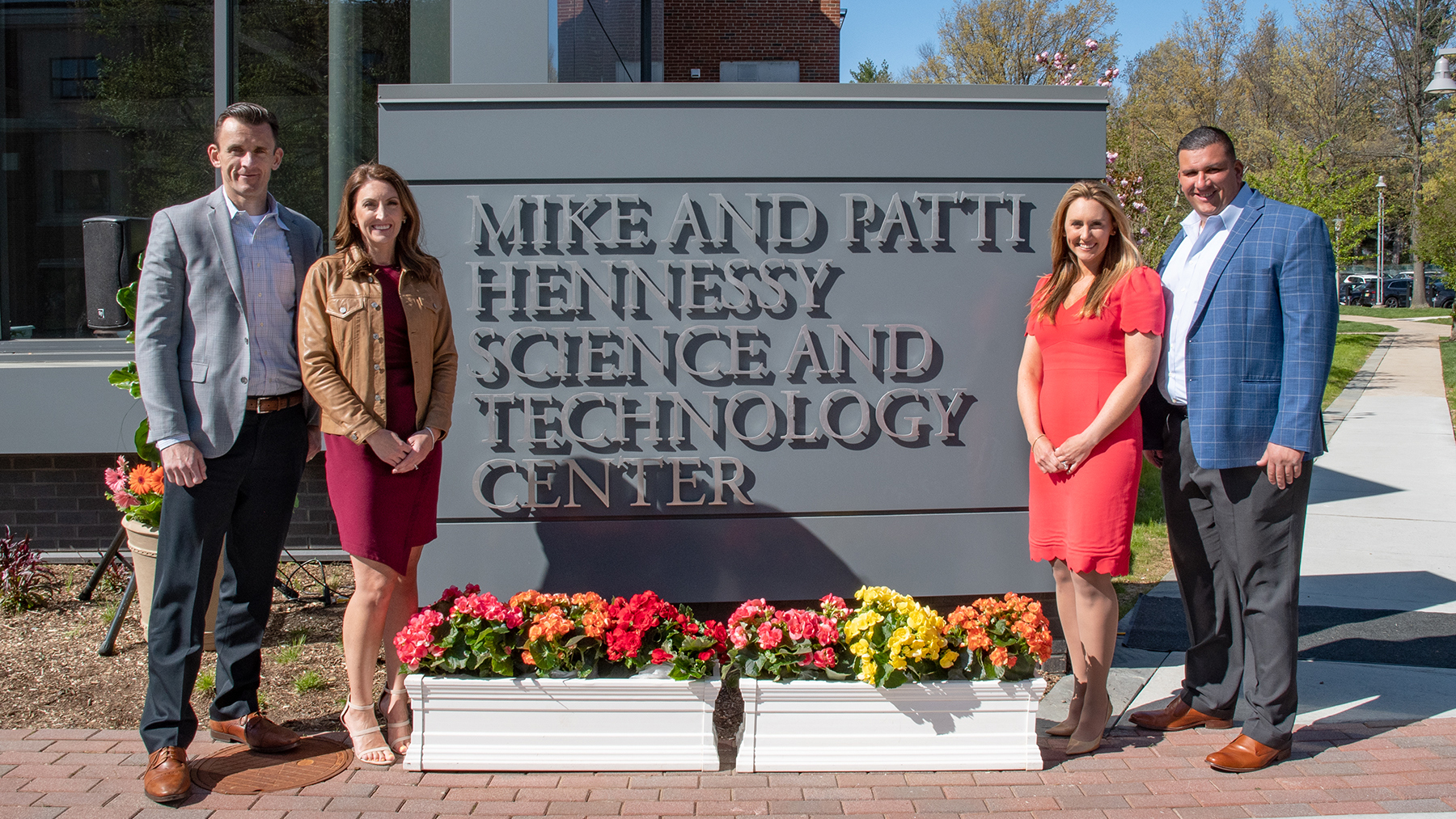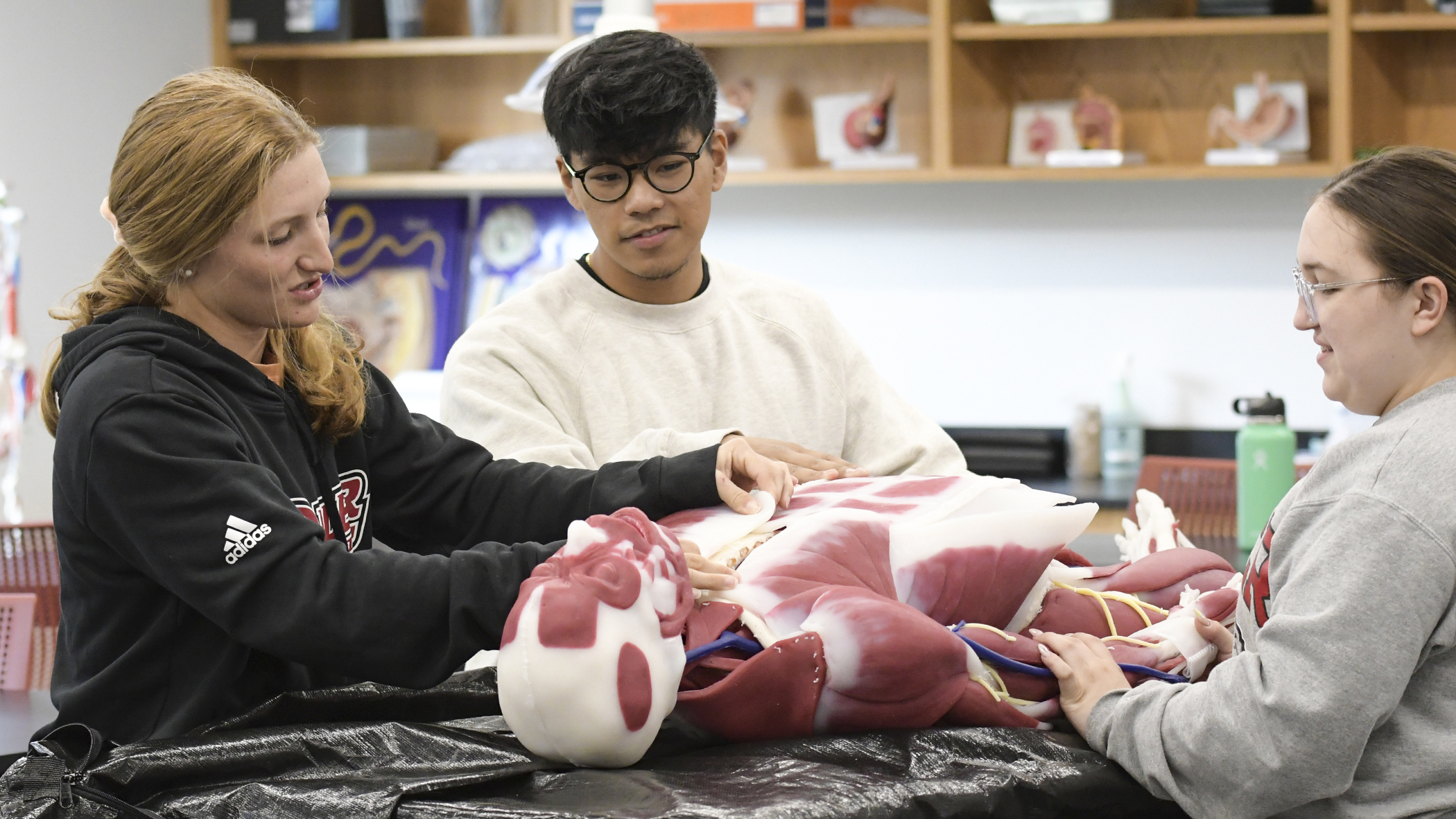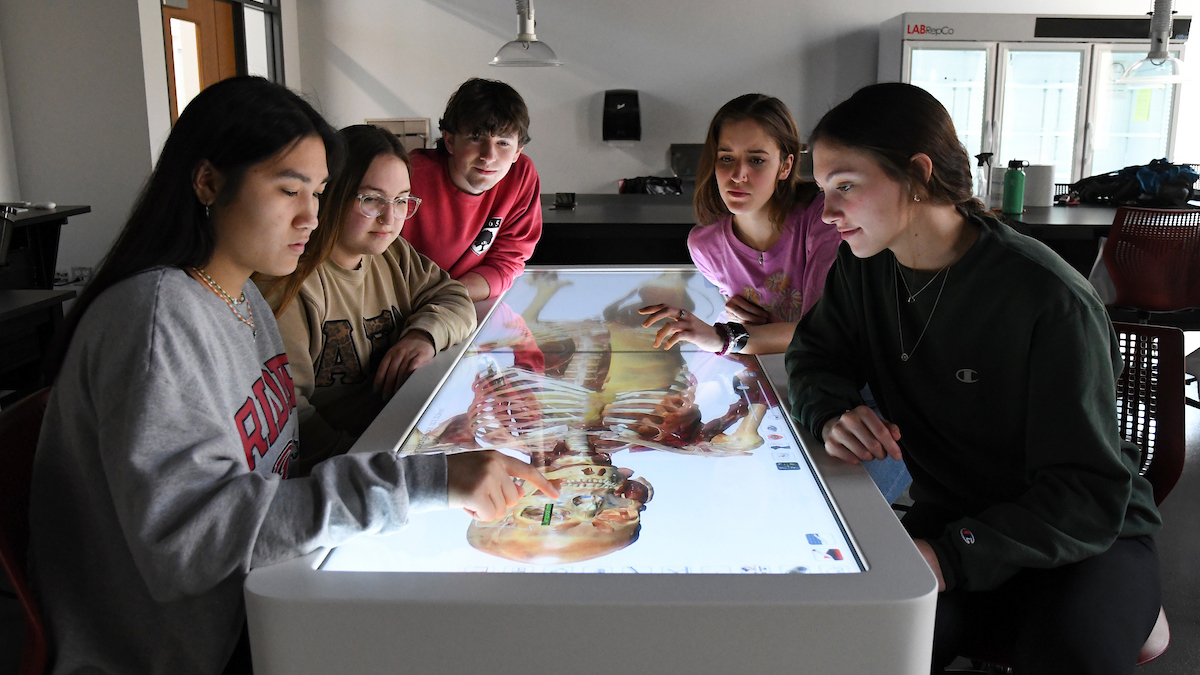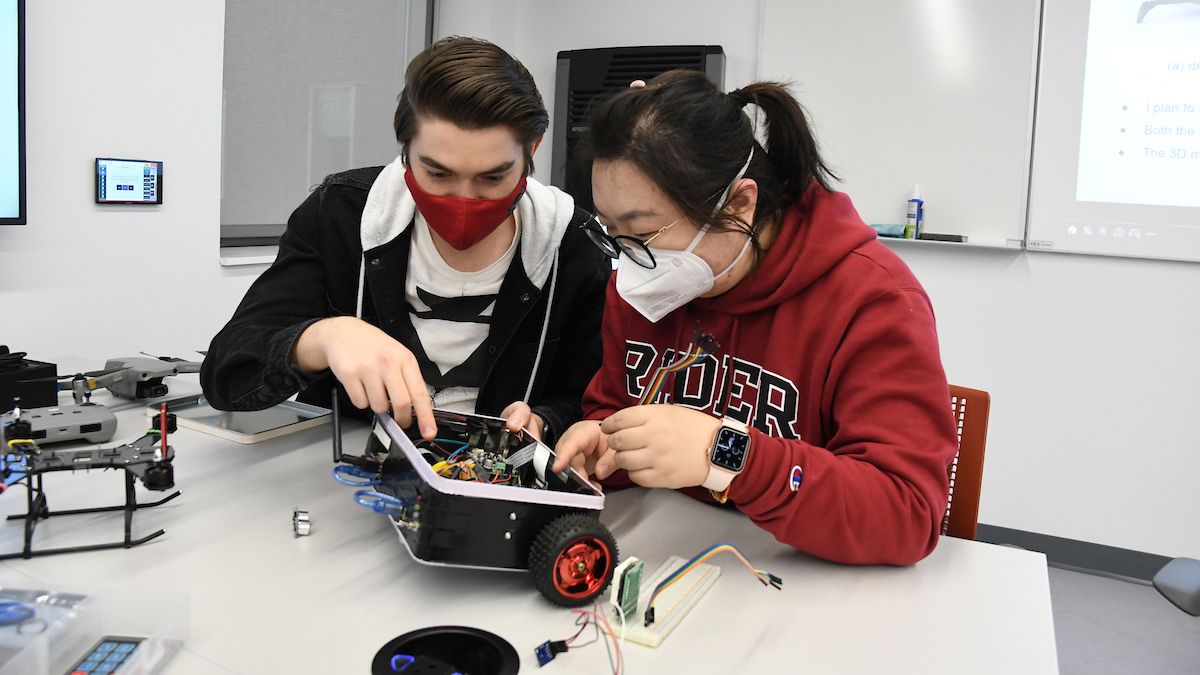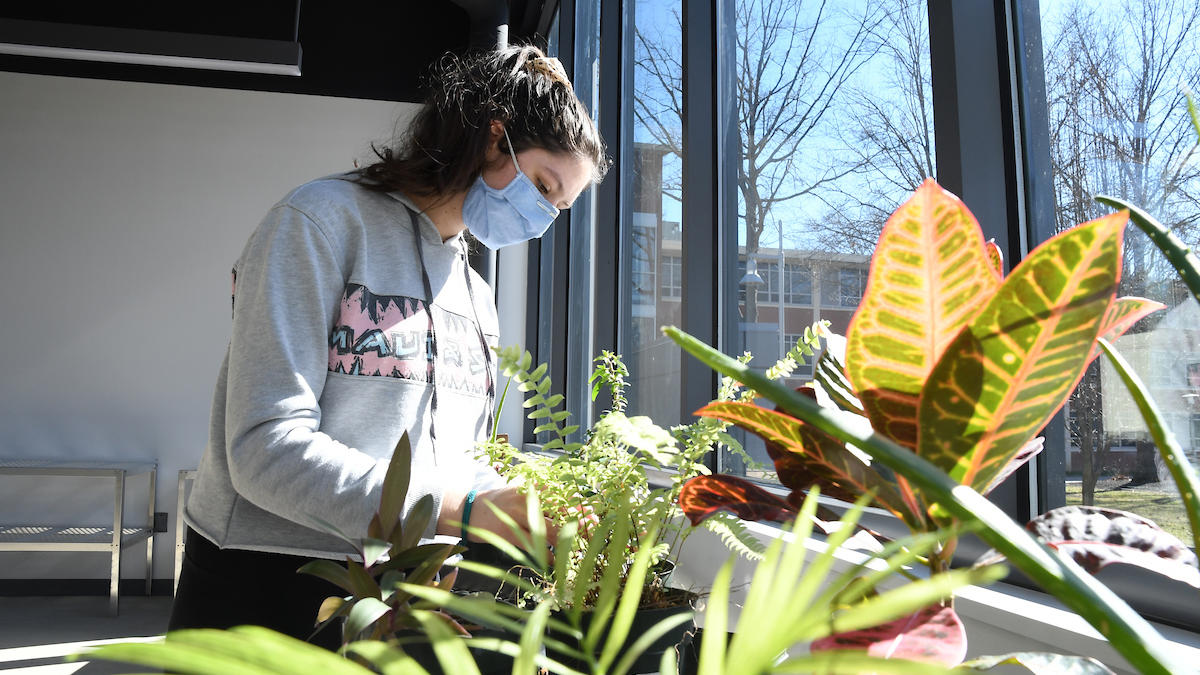Thursday, Apr 28, 2022
New labs and enhanced technology are cornerstones of the project
by Rachel Stengel '14, '20
On April 28, Rider renamed its Science and Technology Center the Mike and Patti Hennessy Science and Technology Center after a $9 million renovation.
The project was made possible through the generosity of a $4 million leadership gift from Mike Hennessy '82, who passed away in November unexpectedly. The gift is the largest ever received for the sciences and the catalyst behind the project. Hennessy made the gift in honor of his late wife Patrice “Patti” Shelmet Hennessy ’82.
"We are incredibly grateful for Mike's gift and devastated that he was not able to see the impact of his generosity," says Dr. Kelly Bidle, dean of the College of Liberal Arts and Sciences.
Hennessy was the founder and chairman of the largest privately held independent, full-service medical media company in North America, MJH Life Sciences. He was dedicated to providing health care professionals with resources needed to enhance patient outcomes. He especially focused on improving the lives of those with cancer, inspired by his wife’s recurring battle with ovarian and breast cancer.
The Hennessy's children, Michael J. Hennessy Jr., Ashley Talamo ’08, Shannon Pulaski and Christopher Hennessy ’11, their spouses and three of their grandchildren attended the ceremony in Mike and Patti's honor.
-
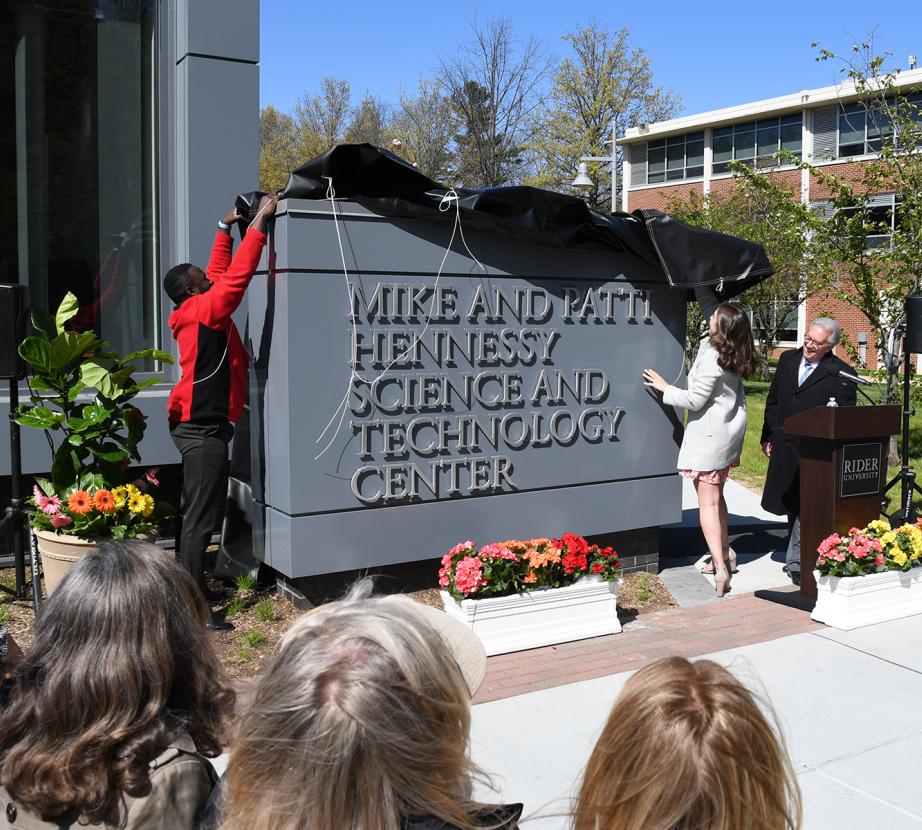 Students unveil the new Mike and Patti Hennessy Science and Technology Center
Students unveil the new Mike and Patti Hennessy Science and Technology Center -
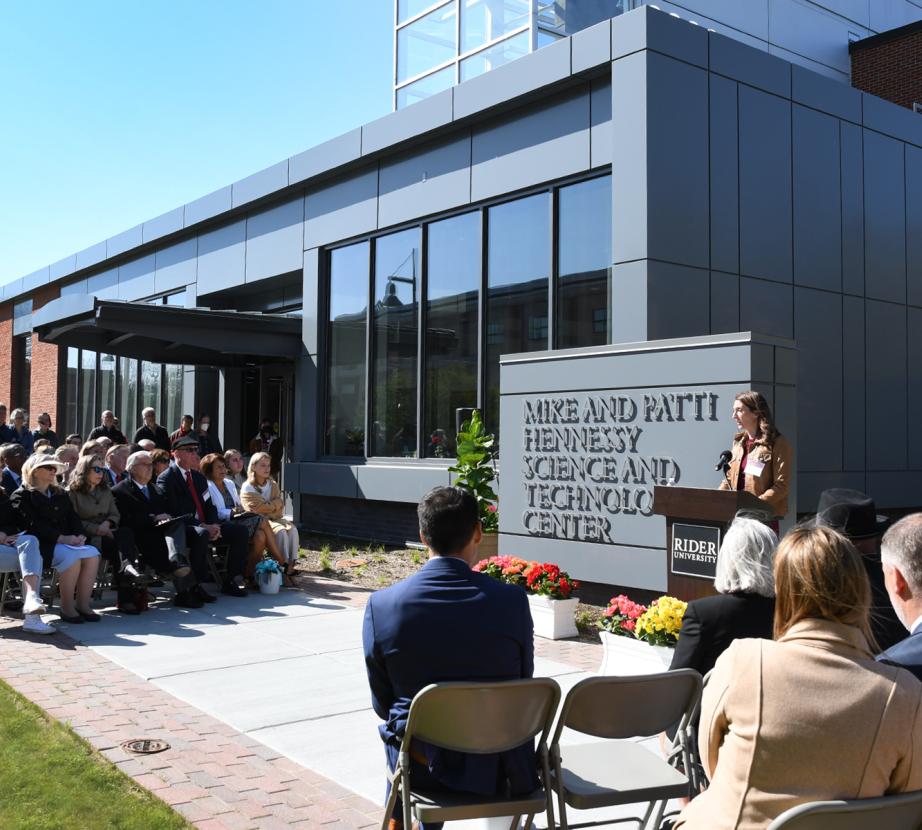 Ashley Talamo ’08 speaks about her parents, Mike and Patti Hennessy
Ashley Talamo ’08 speaks about her parents, Mike and Patti Hennessy
“With the way that science and technology is evolving so quickly, my father’s hope was to expand the science center so that Rider students could reach their full potential and make their own unprecedented advances, which would hopefully impact other generations to come,” Talamo ’08, says. “My siblings and I want to honor both of them and ensure that their legacy of selflessness and family-first philosophy will endure.”
The 9,500-square-foot addition features a number of new labs and innovative spaces for Rider's expanding science programs.
On the first floor addition to the building, there is a new greenhouse, a cybersecurity lab, a software engineering lab, an anatomy/physiology lab and accessible restrooms. Also in the space are a number of elements to inspire collaboration and discussion among students and faculty such as an open floor plan with grouped, informal seating and writable walls. The second floor features a newly constructed artificial intelligence space.
"Rider's science programs are rapidly expanding and this project will allow us to meet the needs of our growing curriculum, preparing our students to enter a competitive workforce or pursue graduate studies," Bidle says.
There are 17 science programs at Rider, with a number of new ones launched in just the past five years, including new bachelor's programs in computer science, cybersecurity, exercise science and an online master's program in cybersecurity. This year, the computer science major also added three new tracks — cybersecurity, software engineering and artificial intelligence — to allow students to further specialize.
The anatomy/physiology lab is the first lab of its kind at Rider. The approximately 20-student classroom was designed specifically to aid in dissection and facilitate group work. Each student group table features an individual ventilation accessory called a snorkel for better air quality during dissections. The room also features increased storage for cold specimens and regular equipment.
Two new pieces of equipment are the true stars of the lab — a synthetic cadaver and an Anatomage table. The synthetic cadaver, called a SynDaver, is a life-sized model of a body made out of materials that replicate the feel and appearance of human tissue. Students will be able to take out organs, perform dissections and visualize structures and connections of major body organ systems. Rider is the only four-year college or university in New Jersey to own a full-body SynDaver.
The Anatomage table is a three-dimensional virtual dissection table. Rider is one of only five universities in the state to have this device. The table displays a number of cadaver images that students will be able to manipulate to view various structures within the body, and perform virtual dissections and physiology simulations. The touchscreen table features an array of MRI and CT scan images of real-life cadavers.
"For a place like Rider, that doesn’t have a medical school or medical-based programs, that’s huge to have that opportunity for our students," says Dr. Drue Stapleton, assistant professor in the Department of Biology, Behavioral Neuroscience and Health Sciences. "We're building on the traditional study of cells and tissues under microscopes and adding more applied and clinical opportunities for students to further develop their critical thinking.”
The software engineering and cybersecurity labs both cater to approximately 20 students, stationing them in small groups. Each room features large display screens where professors and students can project their work for the entire class and among small groups. The cybersecurity lab will allow students to simulate cyber attacks and defenses. On the second floor, a new artificial intelligence space is part classroom, part maker space. Students will work on drones and robotics kits, programming them to navigate independently using artificial intelligence and machine learning.
"One of the things we’ve really put an emphasis on is staying current with the curriculum that’s out there for computer science and cybersecurity," says Dr. John Bochanski, chair of the Department of Computer Science and Physics. "When we talk to employers and people in industry, they really want people who have worked in teams before and can collaborate well with others. These spaces really drive that home."
The new greenhouse has been transformed into a teachable, classroom space for biology and ecology courses. The sun-filled room features new grow racks, trays and lights.
“It will allow students to design and carry out projects investigating the effects of light availability, salinity or other stressors on plant growth and survival,” says Dr. Kerrie Sendall, assistant professor of biology.
The original 30,000-square foot science building has more than doubled in size since it was first constructed in 1961, with two previous additions having been completed in 1963 and 1994. Since 1994 the University has been adding onto and upgrading its science complex to meet the demands of a continuously evolving science education. Recent renovations include many upgrades to lab spaces, classrooms, common areas and faculty offices.

